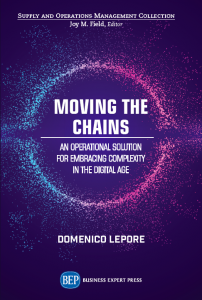
As a new year begins, reasons for fear and uncertainty are multiplying: the devastating effects of the climate crisis, threats of military action, accelerating polarization and blatant incompetence in prominent leaders in various countries. These are all symptoms of a world that is struggling to adapt to increasing complexity and interdependence.
Far from being an excuse to give up, the threats to people’s livelihoods, health and even survival must be the catalysts for achieving more in the direction of prosperity and unity. What else are we here for?
Brilliant business
So what can people do to increase prosperity and unity in their businesses and jobs? We can look at the areas that are under our direct influence. What can we control or influence? We don’t have to solve all the world’s problems but we can do something about where we are right now. The areas where we have influence are precisely the areas where we can work on nothing less than transformation. Improvement is no longer good enough. Business can lead the way in transformation. It can be brilliant by giving people the space to use their intelligence and nurture their systemic thinking abilities to not just solve problems but pre-empt them. It can be brilliant by shining a light through continuous innovation that improves the quality of people’s lives instead of reducing their opportunities.
Adopting the mindset
For too long, business has been associated with greed and a “winner takes all’ attitude, bolstered by expensive litigation. This is clearly counter-productive when every human activity aimed at producing a result requires collaboration. We also know now that this is very healthy in evolutionary terms: collaboration is more effective than competition. The very success of our species depends on it. However, collaboration to achieve win-win outcomes requires an appropriate mindset. How can people “achieve” it?
The transformational power of the Theory of Constraints
Millions of people around the world have read the business novel ‘The Goal’ by Dr. Eli Goldratt who developed theTheory of Constraints. (TOC). This is good in that it spread the word about TOC. However, knowledge of this book alone (and not other books by Goldratt) has led people to believe that this approach is simply about optimization in a production plant. That is just one piece of the picture. The Theory of Constraints was designed to improve performance in a way that has infinite applications. It stems from a mindset where it is our job to continuously work on improving the world, and the reason why we have that job is because all of us have the innate ability to do it.
Unity as our purpose
The Theory of Constraints is based on a fundamental concept of unity where divisiveness is an artificial barrier. These would just be nice words without a practical means to achieve unity, first in our thinking and then through practical implementation. This is the goal that Dr. Goldratt set himself when he took time out to develop the Thinking Processes. Divisiveness leads to conflict, but as Goldratt has taught us, conflict is simply the inability to challenge certain assumptions (mental models) that create the conflict in the first place. By using the Thinking Processes, we can take the symptoms of fragmentation in our current reality and transform them into a win-win, transformational solution. All this is possible as long as we are willing to step back and question the assumptions we make.
Not only does challenging our assumptions allow us to create more unity, it is an established method for continuous innovation. In our own experience at Intelligent Management, we have participated in the use of the Thinking Processes to achieve a remarkable range of results, from healing family differences (something that is crucial in family-owned businesses) to achieving award-winning innovations through to transforming sectors.
Do people want transformation?
Transformation is hard work. It requires individuals to take on the responsibility of their own lives and it requires leaders who are willing to allow real empowerment to happen and the ability to cope with empowered staff. However, the alternative to real transformation that is founded on transparency, continuous improvement and empowerment is an organization that chooses to be artificially constrained by its weaknesses.
The choice to be brilliant and whole
Today, businesses can be brilliant not simply by making money and providing jobs. They have a choice: they can recognize that they are part of a much bigger picture and act as a whole system instead of a collection of fragmented parts. Helping organizations to operate as whole systems has been our focus for over 20 years. It is not simply an ethical choice, it makes business sense. Here are just some of the benefits of operating as a Whole System:
- Unifies previously disconnected efforts
- Creates ability to focus on the very few elements that determine the performance of the system
- Improves Quality
- Accelerates flow of throughput
- Increases engagement and satisfaction of staff
- Synchronizes delivery with market demand
- Improves processes and eliminates redundancies
- Avoids accumulation of WIP
- Shortens lead time
- Enables digital transformation
Connecting the dots and the fragments
We cannot eliminate fear from our lives. It is a necessary element of our existence. But we also have another, equally important need we must satisfy and that is our vision for a better future. So here’s a vision for the year ahead: what if the real purpose of business is to reconnect all the fragments? What if we had the confidence to carry out business knowing that we create sustainable prosperity when we are honest and upright and consider all stakeholders and support good causes? Wouldn’t that be brilliant?
SCHEDULE AN INTRODUCTORY CALL WITH US ‘






Leave a Reply